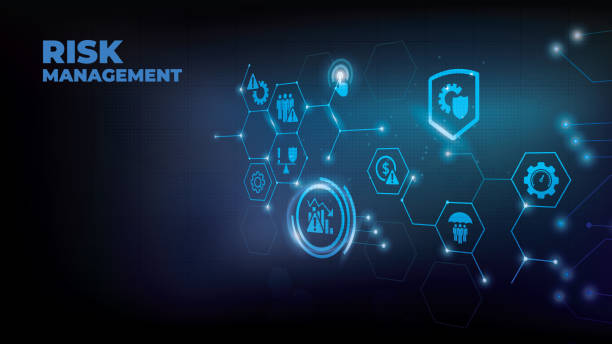Data Breaches – How bad could it be?

“Fujitsu Hacked – Attackers Stolen Personal Information”
Fujitsu confirmed a cyberattack that led hackers to steal personal data and customer information.
Now there’s a headline to put fear into their customers, both current and potential. Not a great look for one of our premier IT system integrators and manufacturers.
But what’s that got to do with me you say? I don’t have any Fujitsu kit and I’m way too small to feature on the radar of a hacker or team of hackers, that would target someone like this. OK, maybe true, maybe not so true.
Did you know that since 2005 the Information Commissioners Office (ICO) has ruled on 13,500 freedom of information and environmental information cases. Many of these would be classed as SMEs and small government departments, particularly local government. Last year alone, 86 enforcement actions were taken which included 37 reprimands, 24 enforcement notices, 23 monetary penalties and 2 prosecutions. Fines of around 80K are not uncommon, and a fine of that size would be a severe blow to an SME. The ICO has issued fines totalling £590,000 to five companies for collectively making 1.9 million unwanted marketing calls which targeted the elderly and people with vulnerabilities.
Fines and enforcement notices cannot be hidden, they are published on the ICO website for all to see, which can have an impact on the reputations of companies, adding to the pain of any fine caused by a unwanted marketing calls or data breaches.
In practice though, the ICO is not there to put you out of business and the chances of a fine of anywhere near the maximum, being applied to an SME, is low but not impossible.
It is, for most SMEs, about doing what is reasonable to prevent a data breach. That will include having the right policies and procedures, known to all staff, and rolled out. Don’t play lip service to this, you will be found out. It is important to be aware of the threat and take the necessary actions to prevent breaches.
Lack of adequate data security is an important basis for imposing fines. Are you one of the SMEs who has swallowed the line that a firewall and some anti-virus, plus cloud storage, is all you need?
In addition to inadequate security, one of the frequent reasons for imposing a penalty is failure to report a violation despite the obligation under the law. Have you got that covered with an adequate policy and process in place and understood?
This can all be a real nightmare for many SMEs, particularly those with a large amount of personal data, much of which they can’t ditch. For example, financial data which under other legislation, they must keep for 7 years. I’m thinking about Estate Agents and financial advisors, even solicitors who I find are very good at telling others what they need to do to comply with the Act but aren’t so hot on how to do it.
One of the biggest issues I find with SMEs, is that they often think they know where all their data is but get quite a surprise when they discover multiple instances of the same data set. This has become a real issue since COVID, in that remote working is becoming normal and it’s a real temptation for an employee, working from home with possibly less than robust broadband, to copy data from cloud storage to their PC or laptop to ensure they can keep working on it. Then they upload it again when they’ve finished but forget to delete their copy. That’s just one instance but it is vital to understand where all this data is. What if for instance, you get what is known as a subject access request, where a client or other member of the public wants to know exactly what personal data you have on them, and why. I spoke to a financial advisor recently who told me that it took one of their partners off the road for 3 weeks, to discover where all the data was kept on just one person. But under the law, they had no choice but to bite the bullet.
We’ve been pondering these problems for some time, and they boil down to processing and storing the data securely and being able to quickly lay your hands on it. There are several systems on the market which will capture where your data is, and who has access to it, generally under the banner of Data Loss Prevention, or DLP. These systems are based on an event-driven approach and require extensive ongoing rules management built for LAN/WAN perimeters and are becoming much less effective working in an increasingly perimeter less environment.
Local and Wide area networks and the notion of a security perimeter are no longer valid with the transition to hybrid cloud, work-from-home, and zero-trust architecture. In such a setup, sensitive files are spread across on-premises repositories (File Server, NAS) and different cloud-based repositories. These cloud-based repositories are divided between the ones that you manage (managed cloud, such as organisational OneDrive), shadow IT (such as communication apps like slack or WhatsApp), and 3rd party portals. We needed an answer to this new data landscape with a cross-platform discovery functionality, coupled with the data flow monitoring capabilities.
We came across Actifile, which works very differently to a standard DLP, which in any case, often requires other tools to provide the security functionality needed. Actifile is based on analysing data risks and applying pre-emptive encryption that handles both external threats and insider carelessness, all in the world of no security perimeters. Moreover, Actifile’s set and forget method, requires little to no maintenance, and can be up and running securing data, in less than 3 working days providing a detailed breakdown of the data risk and leverages the data risk for data flow monitoring, auditing and remediation. This approach greatly simplifies the process.
Actifile is a cloud-based management platform coupled with a lean agent for workstations (both Windows and Mac), File Servers, NAS and Terminal Servers, and a sidecar docker instance for cloud-based file shares (. i.e., OneDrive).
Step 1: Data Risk Discovery and Quantification
Based on predefined privacy regulations and PII definitions, Actifile immediately starts scans for sensitive data using smart patterns. Actifile then quantifies data risk per PII type in local currencies.
Step 2: Data Risk Monitoring and Auditing
Tracks and audits data risk in real-time by continually monitoring incoming and outgoing sensitive data flows from and to the perimeter-less organization.
Step 3: Data Risk Remediation by Encryption
Our patented transparent encryption process automatically secures sensitive data across all endpoints, cloud apps, 3rd party portals, and shadow IT. The entire process, from initial deployment through data risk analysis to remediation by automatic encryption takes as little as 72 hours.
Finally, and importantly, it is very light on administration, quick to set up and we are offering a 30 day trial at no cost. If you don’t like it, we take it away.



Recent Comments